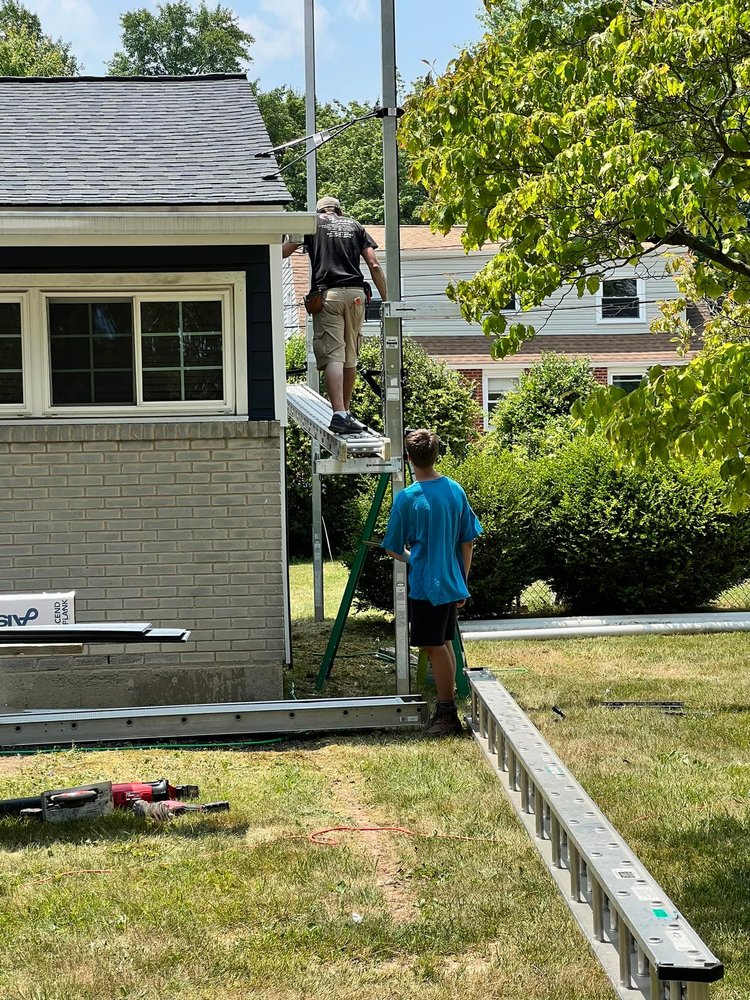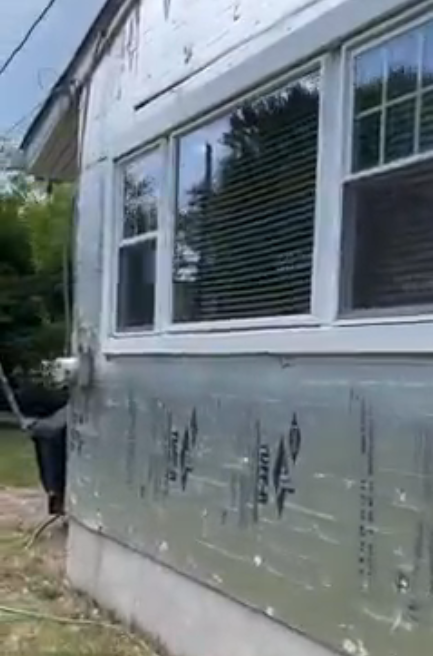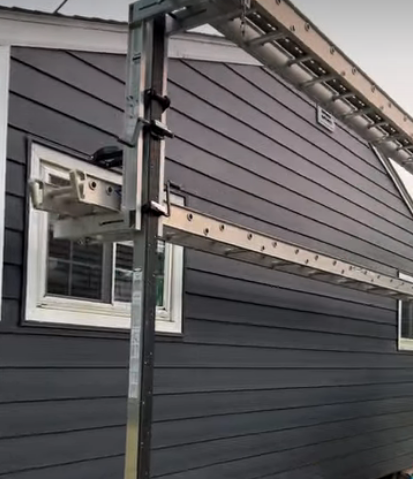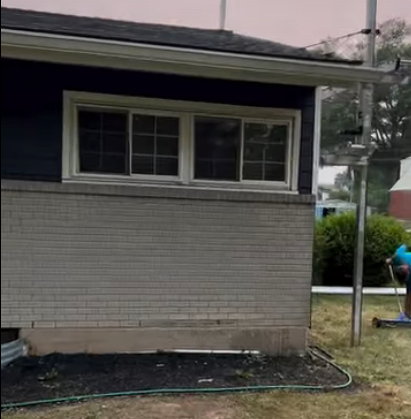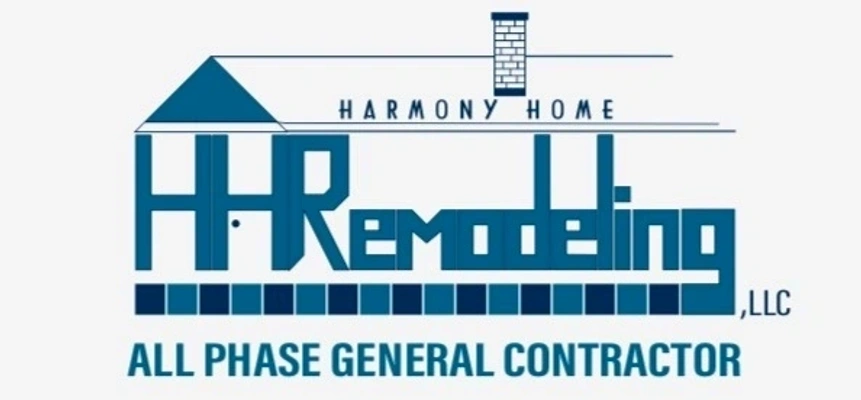
We re-sided this house, and the transformation was impressive! The old asbestos siding was carefully removed and replaced with new, energy-efficient insulated siding. This not only dramatically improved the curb appeal of the home but also increased its energy efficiency, leading to potential savings for the homeowner. The new siding provides a fresh, modern look and added protection against the elements.
Asbestos siding is a siding shingle made from a mixture of Portland cement mixed with asbestos fibers. It’s very brittle and can crack when disturbed, such as nailing into it or sanding it. When the asbestos is broken up, that’s when the fibers enter the atmosphere (and sometimes water), proving to be hazardous to your health.
Yet, it typically does not pose a health risk if left alone with no damage. However, there is always a chance it can degrade and begin causing you issues.
After the development of asbestos cement in 1905 by the Johns-Manville company, asbestos siding became popular by 1910—under the trademarked name, Asbestoside. Homes and buildings were fitted with asbestos siding and other products well up until the 1970s before the EPA ban.
While asbestos is dangerous all around, it encompasses multiple types with some being more common in siding and shingles than others. According to Architectural Digest, here are the types of asbestos that can be found in house siding:
However, since asbestos fibers are microscopic, understanding which type of asbestos is in your siding can be difficult without a professional lab to test it. This makes identifying the siding itself even more crucial as you can’t fully rely on seeing any of the microscopic identifiers.
Whether you’ve had your asbestos siding fall apart and become a health hazard, or you’re being proactive and addressing your siding early on, knowing what to look for is the first step.
It’s a difficult and potentially dangerous task for homeowners or property owners, but can still be done. Yet, the best way is to have an asbestos-removal professional take a look and confirm the presence of asbestos through testing with a quality lab.
Asbestos fibers are tiny and hard to identify visually without a microscope. But if you see a wavy pattern on the bottom edge of the siding material, this may be a sign of asbestos. Another way to figure out if your siding shingles contain asbestos is to find the manufacturing code on the back of the shingles—helping you discover the age and origin of the siding.
Since asbestos was common until the 1980s, homes built before then are usually prime candidates for asbestos-related materials or exposures. Knowing when your home or building was constructed can be the first clue for further investigation.
